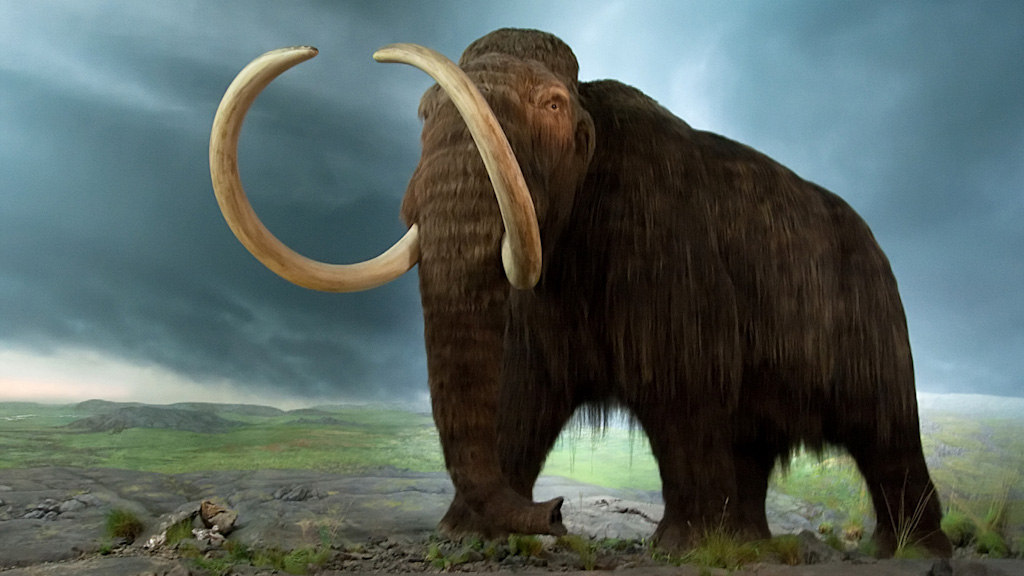Pumpkin and mammoth pies
Americans who celebrated Thanksgiving last weekend have mastodons and mammoths to thank for the pumpkin pie on the table. In a study published this week in the Proceedings of the National Academy of Science, researchers established a link between the extinction of Pleistocene megafauna—mastodons, mammoths, giant sloths, and others—and the existence of modern pumpkin and squash in North America.
The researchers theorized that ancient humans did not originally eat pumpkins and squash because of their toxicity and bitter taste, which results from a compound called cucurbitacin. This acted as the plant’s built-in defence system against predators.
“Initially, humans probably ate the seeds of the wild gourds after some washing to get rid of the bitter taste,” explained archaeologist Bruce Smith to Smithsonian Science News. “[Then, over the course of thousands of years] humans selected for non-bitter forms—they would have grown them and cultivated them and then selected through the seeds, finding seeds that had less bitterness and planting them selectively.”
In order to be able to selectively breed plants, however, there must be a variety of plants to choose from—and this is where mammoths come into play. Scientists have discovered fossilized mammoth dung that suggests that the megafauna who lived 12,000 years ago consumed bitter wild gourds. Since the mammoths’ bodies were so massive, the fruit presented a comparatively small amount of cucurbitacin and posed no harm.
The seeds would pass through the animal’s digestive tract and be deposited along with ‘fertilizer,’ which would help new plants grow, and spread pumpkins and squash across North America. This created a large pool from which farmers could choose from to domesticate.
“It’s been suggested before—and I think it’s a very reasonable hypothesis—that wild species of pumpkin and squash weren’t used for food early in the domestication process,” said Penn State University post-doctoral fellow Logan Kistler in an interview with ScienceDaily.
Pumpkins and squash have been tested and tweaked to meet the needs of mankind. Like dogs, corn, and wheat, the domestication of squash and pumpkins was a slow and deliberate process, relying on a number of large factors. Today, this has enabled it to become a staple in the diets of people around the world, especially on Thanksgiving.
Loneliness & the body
It has long been thought that social isolation is worse for people than consistent social interaction; however, how much worse and precisely in what way has not been determined—until earlier this week.
According to recent studies conducted at the University of Chicago, the inherent stress of being socially isolated causes the body to trigger sympathetic nervous system signalling. The sympathetic nervous system controls the fight or flight response, and induces changes in leukocytes, or white blood cells. More specifically, white blood cells begin activating what is known as the conserved transcriptional response to adversity (CTRA). This induces the expression of genes that contribute to inflammation, and a decrease in the expression of antiviral genes. When the CTRA pathway is activated, and the expression of genes is altered, people become more susceptible to illnesses.
The study, which sampled 141 adults between the ages of 50 and 68, found to be a reciprocal relationship between CTRA and loneliness, with loneliness even predicting the presence of CTRA and vice versa.
“Much of what’s triggered by social isolation is non-conscious,” said University of Chicago psychologist Dr. John Cacioppo, one of the researchers spearheading the project, in his TEDTalk on the subject.
When alone, the body enters self-preservation mode, which can manifest itself into feelings of paranoia.
“If [one is] looking for dangers, [one is] more likely to see dangers, whether they exist or not,” explained Cacioppo. “[This] culminates in a greater likelihood of negative social interactions, when they do occur.”









